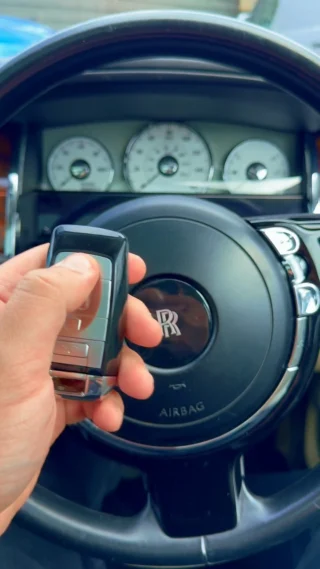This Week's Top Stories Concerning Car Ignition Replacement
페이지 정보

본문
Car Ignition Replacement: A Comprehensive Guide
Car ignition systems play a vital function in the overall performance and dependability of vehicles. They are accountable for starting the combustion procedure in the engine, ensuring the vehicle runs smoothly. However, like all mechanical elements, ignition systems can use out with time, causing efficiency issues. This short article will offer an in-depth take a look at car ignition replacement, including signs of failure, replacement steps, and maintenance pointers to assist vehicle owners keep their ignition systems in optimal condition.

Understanding the Ignition System
Before delving into the replacement procedure, it is important to comprehend the parts of the ignition system. It primarily includes:

| Component | Function |
|---|---|
| Ignition Coil | Transforms battery voltage into high voltage to create a stimulate. |
| Stimulate Plug | Fires up the air-fuel mixture in the engine cylinder. |
| Ignition Switch | Triggers the ignition system and enables electrical current circulation. |
| Supplier | Disperses high voltage from the ignition coil to the correct stimulate plug. |
| Ignition Control Module (ICM) | Controls the timing and shooting of the trigger plugs. |
These components interact to fire up the fuel-air mix in the combustion chamber, making it possible for engine operation. Gradually, wear and tear can result in ignition system failure, triggering the requirement for replacement.
Indications of Ignition System Failure
Certain signs indicate that the ignition system may require repair or replacement. Vehicle owners must be attentive to the following indications:
Difficulty Starting the Engine: If the vehicle has a hard time to start or takes several efforts, it may indicate ignition issues.
Misfires: Engine misfiring, characterized by a rough idle or unexpected loss of power, can show faulty spark plugs or ignition coils.
Electrical Issues: Flickering lights or unpredictable dashboard assesses may recommend ignition switch issues.
Stalling: Frequent stalling, particularly at low speeds, might come from ignition control module failures.
Decreased Fuel Efficiency: Poor combustion due to ignition failure can cause increased fuel consumption.
If vehicle owners experience any of these problems, it is recommended to have the ignition system examined by a qualified mechanic.
Steps for Car Ignition Replacement
Changing the ignition system can be a complicated procedure. The following steps lay out how to carry out a normal ignition replacement. Note that the specific steps may vary based on the vehicle make and model.
1. Gather Necessary Tools and Parts
Before beginning the replacement, ensure that you have the necessary tools and components:
- Screwdrivers (flathead and Phillips)
- Wrenches and ratchets
- New ignition parts (coil, trigger plugs, distributor, and so on)
- Pliers
- Safety goggles and gloves
2. Detach the Battery
Safety initially! Disconnect the unfavorable terminal of the battery to avoid electrical shock during the replacement process.
3. Eliminate the Old Ignition Components
Thoroughly remove the elements of the ignition system:
- If replacing stimulate plugs, use a trigger plug socket and ratchet for elimination.
- For the ignition coil, disconnect any wires before unbolting it.
- If suitable, carefully get rid of the distributor and any related parts.
4. Install New Components
Install the new elements in reverse order of elimination:
- Begin by putting the new ignition coil in position, ensuring all connections are safe and secure.
- Install new spark plugs, being careful not to overtighten them.
- If appropriate, install the new supplier, aligning it properly as you reconnect the electrical wiring.
5. Reconnect the Battery
Once all components are replaced, reconnect the battery. Ensure the connections are safe and transponder key Repairs secure, and there are no loose wires.
6. Evaluate the Ignition System
After installation, begin the vehicle to test the new ignition system. Listen for smooth operation and check for any warning lights on the control panel. If concerns continue, re-evaluate your setup.
Maintenance Tips for the Ignition System
To extend the life of the ignition system and prevent future issues, consider the following upkeep ideas:
- Regular Inspections: Schedule routine evaluations of the ignition system throughout car maintenance checks.
- Change Spark Plugs: Follow the producer's guidelines for trigger plug replacement intervals.
- Inspect Wiring: Inspect wiring for indications of rust, fraying, or disconnections.
- Keep the Engine Clean: Regularly cleaning up the engine bay can avoid dust and debris from building up around ignition components.
- Use Quality Parts: Always use top quality ignition elements from credible manufacturers to make sure reliability.
FAQs About Car Ignition Replacement
Q1: How frequently must I replace my ignition system?A1: While there is no particular timeline, regular assessments must be carried out every 30,000 miles or as suggested by the vehicle producer. Elements like spark plugs normally need replacement every 30,000 to 100,000 miles, depending upon the type. Q2: Can I change ignition components myself?A2: Yes, if you have fundamental
mechanical abilities. Nevertheless, for those unknown
with ignition systems, it's recommended to seek professional assistance to prevent prospective errors. Q3: What are the costs included in ignition replacement?A3: The cost can differ based on the vehicle and parts required
. Parts might range from ₤ 20 to ₤ 300, while labor expenses in a mechanic's shop can include another ₤ 100 to ₤ 200. Q4: How can I tell if the ignition coil is faulty?A4: Signs of a malfunctioning ignition coil include engine misfires, difficulty starting the vehicle, and poor acceleration.
A diagnostic test can likewise determine problems with the ignition coil. Q5
: Do I need to reset the vehicle's computer after replacement?A5: Typically, modern-day lorries instantly spot new elements, however sometimes, a reset might be recommended. Consult your vehicle's service
handbook for particular directions. The ignition system is an integral part
of vehicle operation, and comprehending its components and upkeep can assist vehicle owners prevent unnecessary concerns and expenditures. By acknowledging the signs of failure and following the correct replacement steps
, car owners can ensure their cars begin dependably and perform at their finest. Routine maintenance and care can prolong the life of ignition components, offering comfort for motorists on the road.
- 이전글You'll Never Guess This Large Fireplaces's Benefits 25.06.22
- 다음글울트라킹콩 2통 200환 25.06.22
댓글목록
등록된 댓글이 없습니다.
